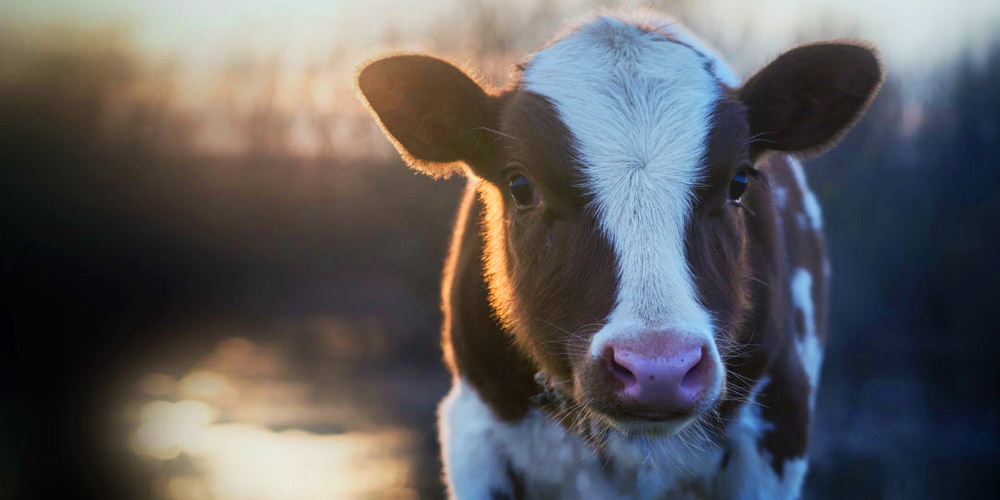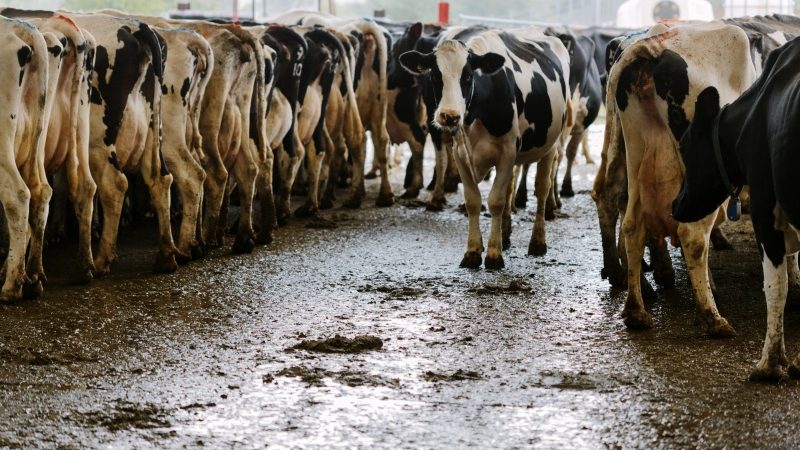Painful procedures
Those female calves who are kept to replenish the dairy herd will undergo painful on-farm procedures, such as ‘disbudding’. Calves may have a hot iron pressed into their head, to damage the immature horn tissue (called buds) and prevent them from growing horns; or have the horn bud scooped out; or have caustic chemicals applied to burn the emerging horn tissue. Despite disbudding being immensely painful and distressing for calves, it is usually done without any pain relief.
If dairy calves are not ‘disbudded’, older dairy cattle may be ‘dehorned’—an extremely painful and distressing procedure that also carries a higher risk of infection and even blowfly infestation in some regions.
Dairy cattle in most Australian states can still also legally have up to two-thirds of their tail removed using a rubber ring, sharp knife or hot docking iron, though the Cattle Standards and Guidelines (agreed in 2016) will prohibit this if and when adopted in each State. While self-reports by farmers suggest this procedure is not commonly performed in the Australian dairy industry, those cows who do have their tails ‘docked’ experience acute and chronic pain, can develop infections and are unable to swat away flies from their hindquarters.
Risky forced births (inductions)
To make the birth of new calves into the herd occur over a convenient time period, some dairy farmers induce labour in pregnant cows, so that they will deliver their calves earlier than full-term. This is done despite the fact it puts the cow at greater risk of uterine infection, and even death.
Induction also affects the health of the calf. Many calves who are born early are unable to survive and are immediately killed. They may be shot in the head, using a captive bolt to the brain; or may be killed using blunt trauma to their skull. Sadly, calving induction continues and is legal, despite most dairy farmers successfully managing calving without such intervention. The Australian dairy industry policy is for a (voluntary) phase out of this practice by 2022, but the Cattle Standards and Guidelines permit the practice.
‘Milked’ dry
Selective breeding and, more recently, genetic manipulation, has resulted in the selection and production of cows who produce enormous amounts of milk. The average amount of milk a cow produces annually has more than doubled in the last 40 years. The modern dairy cow can produce about 28 litres of milk per day—that’s fourteen 2 litre cartons of milk and about ten times more milk than her calf would need.
Producing large quantities of milk puts a significant metabolic strain on the animal. The great weight of the udders often causes painful stretching or tearing of ligaments and frequently causes foot problems, such as laminitis. These foot problems can be associated with significant pain. Dairy cattle are also susceptible to infections of the teat and udder (mastitis), which can be very painful.











